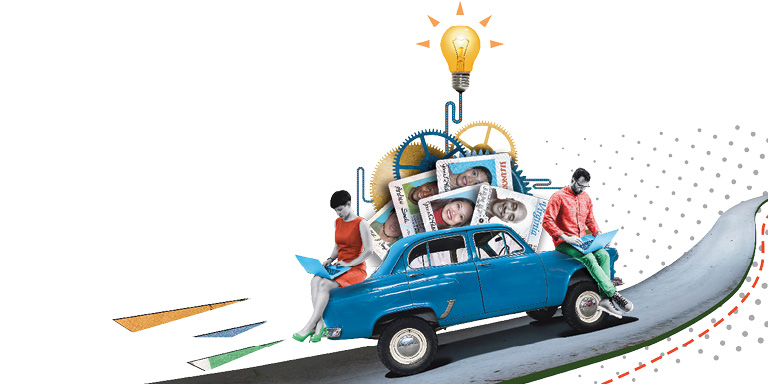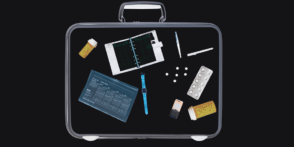Data Transfer
How the Driver History Record functionality is keeping the roads safer
Move to a different state. Get a clean slate.
That seems to have been a mantra for non-commercial drivers who rack up convictions in their home states and are at risk of losing their driver’s licenses. Far too often, it’s been a successful strategy—with dangerous implications for people who share the roads with these unsafe motorists.
Until now, that is. Thanks to the Driver History Record (DHR) feature within AAMVA’s State-to-State Verification Service (S2S), jurisdictions are now able to instantly share conviction histories, equipping licensing staff with a complete picture as they determine whether to issue a driver’s license, and helping to keep unsafe drivers off of the roads. Likewise, officers are able to see a driver’s entire record during a roadside stop, providing valuable context that can influence their decision-making. DHR goes beyond the base S2S functionality that indicates whether applicants have licenses in other states.
In other words, the loophole is closing. It is a game-changer for jurisdictions that have long struggled to identify people whose out-of-state track records suggest that they may be dangerous drivers and a huge step forward toward the ultimate goal of safe roads.
Prior to DHR, “it had become common knowledge that if you didn’t hold a [Commercial Driver’s License, or CDL], you could move to a new state and basically get a fresh start because your history didn’t follow you,” says Holley Cook, driver license division chief of the Alabama Law Enforcement Agency. Alabama implemented DHR in April 2022.
With DHR’s instant electronic data sharing, it’s a different story. Now, “when a driver applies for a new license, the [state agency team member] is getting a consolidated view of the person—a full picture—which allows the state to make good decisions regarding whether they want to issue the license or not,” says Pam Dsa, senior project director for drivers systems at AAMVA.
Alabama is one of 12 states currently using DHR, with eight more scheduled to join prior to the end of 2024. DHR is a feature within the broader S2S platform; currently, 38 jurisdictions are using S2S, with two more slated to join by the end of next year.
The Challenges
In an era of widespread cross-jurisdictional collaboration and ubiquitous electronic tools, the most surprising aspect of DHR might be that it has taken so long to emerge as a consensus solution.
After all, jurisdictions have shared conviction information for decades. Ever since Nevada became the first signatory to the Driver License Compact (DLC) in 1961, states have agreed to share such data. Forty-six states are committed to the DLC, which includes a provision designed to ensure that every driver has just one license and a single, unified, comprehensive record. Most remaining states comply with most of the DLC’s provisions.
So the holdup has not been an unwillingness to share driver-record information between states, nor disagreement regarding governance.
Instead, for decades, the primary challenge has been logistical: When a motorist moved to a new state, administrators from the driver’s previous state shared the data either by emailing or sending a hard copy. That data had to be entered manually, so in many states, the result was a substantial backlog.
DHR promises to change that by eliminating—or at least dramatically reducing—the need for manual oversight of inter-state driver record updates. DHR is the “system to carry out the functions of the Compact,” according to Jessica Ross, driver license compacts and reciprocity program director at AAMVA.
DHR owes much of that capability to S2S, the electronic platform that launched in 2015 and enables frontline staff at state licensing agencies to immediately determine whether an applicant has a license in a different state. By standardizing the format of shared data and making that information instantly accessible to partners across the S2S network, DHR eliminates the data backlog that caused so many state officials to make licensing decisions based on incomplete information.
“The system is helping to make [record exchange] more accurate, more timely and more consistent—because often with the paper records, the exchanges just weren’t happening,” says AAMVA CIO Philippe Guiot.
Why did DHR take so long to create? Technology is not the issue, since it has long been possible to securely share and merge electronic records. Instead, the problem was that for decades, building a tool such as DHR did not receive the funding needed to bring it to life. But when S2S was created to support the rollout of REAL ID, an enhanced identification credential designed in the wake of 9/11, members of the S2S governance committee identified the opportunity to expand the benefits, according to Guiot. The platform they were building was also ideally suited to sharing data that could establish the “one driver, one license, one record” standard that industry leaders had long aspired to achieve. Following that insight, the board overseeing the DLC is working on merging with the S2S governance committee.
“The idea has been out there—it was logical, it made sense to do, and it was just a matter of finally finding the right opportunity in terms of both funding and collaboration,” says Dsa. “It feels like it’s all coming together.”
Now that DHR is up and running, Dsa says, “we’re seeing states actually reaping the benefits.”
A Gradual Rollout with Instant Value
Wisconsin was the first state to implement S2S and opted to continue in that leading role as the first state to implement DHR.
“We wanted to keep that precedent going—and also were just really excited about DHR,” says Cara Schamun, motor vehicle program specialist in the Wisconsin Department of Transportation’s Citations and Withdrawals unit, and a member of the working group that helped develop S2S.
Going first in a data-sharing arrangement is an interesting proposition because, initially at least, there’s no one to share with. New states are coming online regularly, but implementation can be challenging given it often requires disruptions to existing procedures.
“The technology part is always easier. It’s the systems changes and everything else around it—the procedures, the training of the staff—because they have to change the way they’ve done things operationally,” Dsa says.
In many ways, DHR emulates an existing digital data-sharing platform used to track holders of Commercial Driver’s Licenses across different jurisdictions. The difference is volume: A little more than 5 million Americans have valid CDLs, while the number of licensed drivers overall in the country is well over 200 million. That difference in scale corresponds to a higher degree of difficulty in making the transition.
The good news, though, is that states can benefit from the system even before all of their peer jurisdictions adopt DHR. Once Minnesota, Wisconsin’s neighboring state, came online and the Wisconsin team saw how smoothly the system worked, they turned their focus to hoping more nearby states would sign on to DHR.
Alabama, in contrast, has benefited from a more accelerated adoption timeline. More than a third of Alabama’s driver record exchanges already are taking place through DHR.
“As more states come on, the value of this system is going to increase,” says Alabama’s Cook.
Cook says Alabama’s rollout of DHR was smooth, though she does caution peers not to underestimate the extent of the business process changes required. Staff who have spent years printing and mailing records will need to adjust to a new electronic system, in some cases requiring changes to data standards.
Cook and Wisconsin’s Schamun both report that despite the challenges that always seem to accompany a tech rollout, it didn’t take much for their teams—leaders and frontline staff alike—to embrace DHR. And with the prospect of keeping people safer on the roads at the forefront, adopting DHR is a natural fit for many.
“It’s totally worth it,” says Schamun. “You’re always going to run into road bumps, and I’d rather identify them, fix them and move forward, because now we’re working with good data, and we’re focused on the future. This truly will create safer roads going forward, and we’re getting better every day.”




